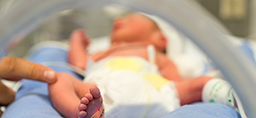
You’ve waited so long for the chance to get your baby in your arms—and then the big day comes.
Your new bundle has arrived.
One of the first things you might want to do at home is give your baby a bath. In past posts, we’ve looked at the changes that have taken place in the last several years, as it pertains to giving baby a bath right away.
Many hospitals wait at least 12 hours to give baby a first bath.
I recently heard about a different technique, a swaddle bath, which is worth looking at.
Swaddle baths are used in many NICUs, but they can also be used for babies who just don’t like bath time.
How it’s done
As the name implies, the swaddle bath combines the swaddle with the bath—your baby is swaddled in a lightweight blanket or swaddle, retaining that tight-quartered feeling experienced in the womb.
Baby is then submersed in a small baby tub, only about up to the shoulder level.
You then ease into washing baby’s arms and legs, taking each limb out of the swaddle, one by one. You put the arm or leg back into the swaddle and proceed to the next arm or leg.
To wash the rest of baby’s body, you can try to get underneath the swaddle or you can simply use the swaddle itself to massage and wash baby’s chest, belly and back.
All in all, it can be a calm, soothing process—for you and your little one.
Testing it out
A Colorado hospital conducted an interesting study on the two kinds of baths—traditional unswaddled versus swaddled.
Of 15 babies who received a traditional sponge bath, 93% cried. Of 21 babies given a swaddle bath, only 38% cried.
The hospital’s staff also found parents in the latter group felt more satisfied with the swaddled bath, likely because their little ones shed fewer tears.
Another positive with the swaddle bath: Each baby’s temperature stayed more stable. (Keep in mind, this is one of the reasons many hospitals have decided to delay newborn baths—to avoid affecting baby’s temperature.)
A 2014 study in the Journal of Caring Sciences observed similar effects with temperature and crying when comparing traditional baths to swaddled baths.
Researchers in that study checked each baby’s temperature 10 minutes before and 10 minutes after traditional baths and swaddled baths.
They found temperature loss was “significantly less” in the group that had swaddle baths. They also observed shorter crying time with swaddle baths, suggesting babies experienced less stress with that technique.
A study of 80 babies in a large hospital NICU also looked at the two bathing methods, traditional vs. swaddled, but it placed more emphasis on the crying and physiological effects.
In that study, the baths took place 24 hours after birth.
Gauged by a measurement known as the Newborn Infant Pain Scale, the babies showed significantly decreased levels of stress with a swaddle bath, but higher levels of stress with a traditional bath.
The traditional bath also led to a higher heart rate and lower temperature just 10 minutes after the bath.
The conclusion? A swaddle bath could be a great way to defuse baby’s stress at bath time.
 /a>
/a>
 /a>
/a>
 /a>
/a>